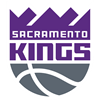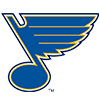Memorial Day is a milestone in the baseball season and is often considered a good time for fantasy managers to take stock of their fantasy rosters. In traditional roto formats, there's still time to be patient with around 65 percent of the season still in front of us. Most points formats are head-to-head in some form, however, meaning there are fewer weeks to turn around underperforming squads as the regular season could reasonably end at the close of August. With that in mind, we'll take a slightly different angle to this week's article, shifting from the player focus that has driven content to this point to more strategy-based advice.
The article will be divided into two separate sections. First will come advice for teams that have had success early this season and in comfortable playoff position. Next is strategy targeted for teams that have struggled and need a turnaround to even make the playoffs.
Teams in Strong Playoff Position
The hope is that all of our subscribers have success in their leagues, so let's start there and hope that covers the majority of readers. Due to the variation in points formats, there won't be a universal definition of what strong position playoff entails. We can use something of a sliding scale approach to some of these strategies, though. For example, if the outcome of a single matchup could determine your team's playoff fate, it's probably better to play things on the safer side and perhaps only minimally employ these
Memorial Day is a milestone in the baseball season and is often considered a good time for fantasy managers to take stock of their fantasy rosters. In traditional roto formats, there's still time to be patient with around 65 percent of the season still in front of us. Most points formats are head-to-head in some form, however, meaning there are fewer weeks to turn around underperforming squads as the regular season could reasonably end at the close of August. With that in mind, we'll take a slightly different angle to this week's article, shifting from the player focus that has driven content to this point to more strategy-based advice.
The article will be divided into two separate sections. First will come advice for teams that have had success early this season and in comfortable playoff position. Next is strategy targeted for teams that have struggled and need a turnaround to even make the playoffs.
Teams in Strong Playoff Position
The hope is that all of our subscribers have success in their leagues, so let's start there and hope that covers the majority of readers. Due to the variation in points formats, there won't be a universal definition of what strong position playoff entails. We can use something of a sliding scale approach to some of these strategies, though. For example, if the outcome of a single matchup could determine your team's playoff fate, it's probably better to play things on the safer side and perhaps only minimally employ these strategies. If you've built up a four-game postseason cushion, a combination of multiple of these strategies could be worthwhile. With all that in mind, the overriding theme is that the better your team currently is, the more chances you can take to try to craft the perfect roster for the playoffs. Here are some specific ways to try to achieve that:
Don't Settle for Mediocre
Identify the mediocre or worse players on your roster and replace them with players you believe will be better in the long term. Be willing to sacrifice short-term production. This is a simple enough concept and on the surface a rather obvious one. So, let's find some examples using specific players. Let's say for example that Ha-Seong Kim is your starting second baseman. Per CBS sports, he's the 19th-best player at the position using points per game, which is okay, but also not overly impactful. Managers should be willing to take chances to improve upon that production. One emerging player that is still available on many platforms is Nick Gonzales. It's possible his hot start fades and his strikeout rate picks up. In that worst-case scenario, he can be replaced by a player such as Luis Garcia or Davis Schneider, both of whom are within 0.2 or 0.3 fantasy points per game of Kim and are widely available. In other words, Kim is producing at a level that is fairly easy to replace, so it's worth taking a risk to upgrade on his production because if that risk doesn't pay off, there's likely to be players that can produce comparably on the wire.
Take Advantage of Bad Teams in Your League
Exploit the chance to buy low on underperforming stars. Find some of the teams that aren't doing so well in your league and identify underperforming players on their rosters. Offer a lesser player that may have better production in the short term to improve the outlook of your roster in the long term. We offered some buy-low players in our article last week, but there are a ton of star-level players that haven't performed to expectations early on. A small sample includes Pete Alonso, Manny Machado, Francisco Lindor, Alex Bregman, Yordan Alvarez and Julio Rodriguez. Those are top-tier names that may not be available, but there are less obvious targets also potentially worth targeting.
Stash
Stash prospects or injured players. Fantasy managers love stashes and there's finally a good chance to do so while also benefitting your team. It's too early to take on many (if any) dead roster spots, but take advantage of any IL or NA roster spots on your roster. There are too many injured players or prospects in this category to list, but drop some options in the comments if you have questions about potential stashes in your leagues.
Teams That Need To Improve
It's no fun to have a team that isn't winning, and the grind of the baseball season can make the thought of fighting through the struggles nearly unbearable. With a lot of injuries piling up, it may feel like it's already not your year. On the other hand, the first step to turning things around is to fight through the desire to give up. Even in head-to-head leagues, there's a ton of time to make up ground. Here are some other things fantasy managers can do to try to turn things around:
Prioritize Immediate Production
Replace players that aren't contributing. To be clear, I don't mean cut every underperforming player. Instead, cut any stashes that you can and instead use those roster spots to immediately place productive players in your lineup, even on a part-time basis. It doesn't do any good to stash the likes of Kodai Senga (shoulder) and Jacob deGrom (elbow) if your team is eliminated by the time they return from the injured list. The waiver wire may not have great answers, but it will have players with the potential to put up points when you need them, which is right now.
The same logic can be applied to potential trades. Don't be afraid to "lose" trades based on name value if it improves your team now. Trading away struggling stars for immediate production may draw disgust from your leaguemates, but your job is to make your team as competitive as possible. This isn't to say give stars away for players that are destined for the waiver wire in a few days, but making unconventional trades is a potential piece of turning things around.
Use Every Method to Maximize Volume
This is another piece of advice that can take multiple paths. The more obvious method is to load up on SP/RP eligible players and dump fringy relievers to maximize start volume. Many leagues have smartened up to this strategy and have a start limit – or other methods – in place to limit volume.
There are other, more subtle ways to try to accomplish the same goal. Another traditional method is by streaming two-start pitchers. This isn't a new concept, but taking on riskier two steps may be necessary. The same method can be used for hitters. This week's schedule provides an example, as several teams have only five games. Dedicate a couple of roster spots to churning streamer bats to field as full of a lineup as possible on a daily basis. Leagues that penalize strikeouts can complicate this strategy, so be careful to pay attention to the skillset of the players you are streaming.
Don't Play Scared
Don't be afraid to try unconventional things and get creative. It's not time to panic yet, but for teams that have underperformed in more extreme ways, it is probably time to try something different. Don't be afraid to do so, or it may be too late.









































